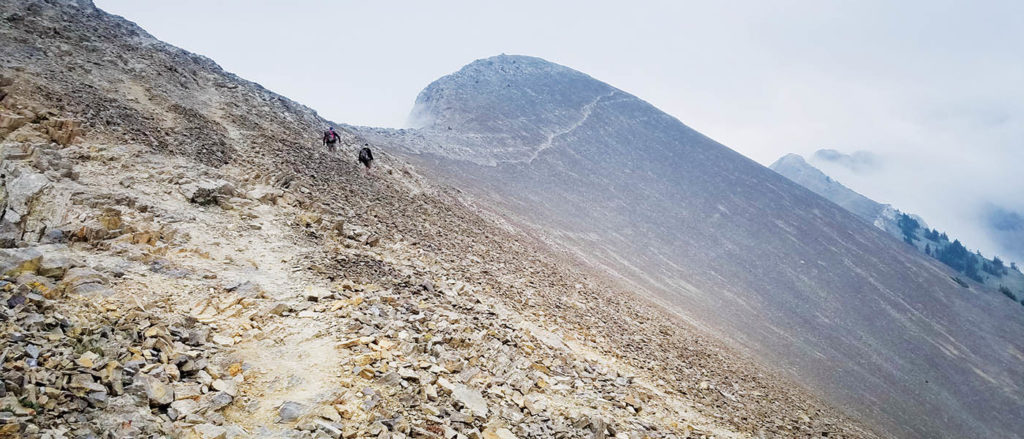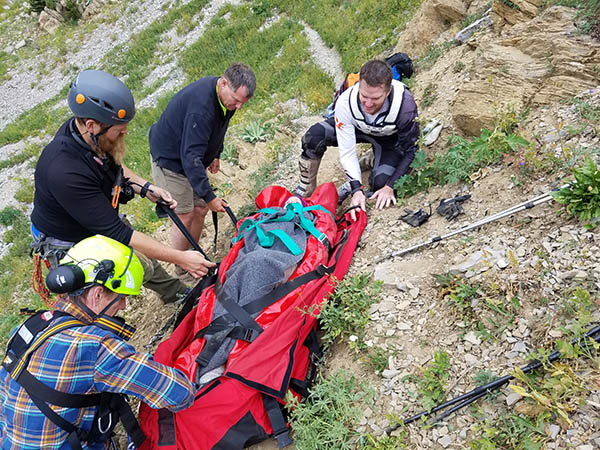So much of the Pacific Northwest’s public lands and backcountry are located east of the Cascades. With the help of five outdoor enthusiasts, some who make their living out in the woods, we explore the diverse ways people work and play across the Inland Northwest’s vast wildlands. Their stories offer behind-the-scenes insights into the wild places we love, and we hope they will inspire you to get out and explore more of the region’s world-class mountains, forests, trails, and waterways. // (OTO)
By Kayla Haas
Last August, my parents and I were attempting to hike the Bridger Ridge from Fairy Lake to the College “M” in Bozeman, which included nearly 21 miles across rugged and exposed terrain with 6,800 feet of elevation gain and 9,500 feet of elevation loss. It’s not a trek for the faint of heart, and after much planning and preparation, this was our fourth attempt.
We were nervous, but prepared. Even so, early in the hike—just as we were finding our rhythm—disaster struck. Literally. As we crossed through a narrow scree-covered bowl, a group of mountain goats about 900 feet above us dislodged a rock. My mom was struck in the leg with a jagged bowling-ball sized cannonball.
The impact was so intense it resulted in massive avulsion of her leg. My dad immediately tended to my mom’s injury, and I called 911. Nearly four hours later my mom was short-hauled off the ridge in a vinyl bag attached to a 100-foot rope hanging from the bottom of the Search and Rescue (SAR) helicopter. She was patched up with 11 internal stitches and 23 staples, and I am happy to report that she’s on the road to a full recovery with one hell of a story.

But I’m left brewing over some tough questions: how do you come back from a backcountry trauma, when the injury is more than just physical? The accident gained national attention, which garnered us supporters and haters. How do you get back out there when so many online critics say you should stay home?
I hate to reduce my experience to cliché, but I found the silver lining and got back on the horse. It was that simple. I was open to learning and trying again. I kept hiking, camping, and backpacking with a new sense of confidence. Like any life lesson, I believe that what you take away from the lesson is what matters.
A backcountry crisis offers profound lessons in survival and grit. Witnessing a traumatic and gory injury coupled with being a part of the rescue effort offered an invaluable opportunity to keep a cool head during crisis. However, the biggest lesson I learned from this experience was true empathy.
The accident could have unfolded in a million other ways that would have be much more severe. If that rock hit my mom’s pack or torso, it would have certainly knocked her off of the side of the mountain, resulting in more trauma and a high probability of death. If the rock hit her in the head, it would have surely killed her instantly and gruesomely.
I also imagined myself in my mom’s position; if the rock had hit me, would I have been able to keep my calm? My mom, in a bewildering display of control, stayed calm and focused on her breathing. She never lost her composure and never shed a tear.
I was embarrassed when I realized I might have been the exact opposite. I could have been a nightmare patient, hysterically screaming for help but so fearful that I wouldn’t let anyone close enough to actually help me.

Shifting my morbid game of “what if” from victim to responder, I imagined myself in my dad’s position as he hastily kicked toeholds in the steep, scree-covered hillside to tend to my mom. He is a trained and experienced first responder. He knew exactly what to do and took action before my mom and I could even process the situation fully.
If my dad had been injured, would I even have known what to do? Would I have been able to keep a level head and act quickly?
Thankfully, my parents have taught my brother and me what it means to be self-reliant—especially in the wilderness. I had always hoped that when called upon, I would tap into an inner strength. On that fateful Sunday in August, I showed up with a cool temperament, wisdom, and grit.
I truly believe there is an opportunity to learn and grow from every experience in your life—good or bad—and it is up to you to be open and forgiving enough to see the lesson. It would have been easy to curse the goats putting the blame on them. It would have been easy to turn in my hiking boots and try less arduous and tame hobbies.
I could have let fear take the wheel and hightail it back to my comfort zone. But then again, comfort zones are boring and void of wisdom from lessons learned. To this end, I will to stick with being an explorer of the wilderness and my mind.
[Feature photo: Bridger Ridge // Kayla Haas]













